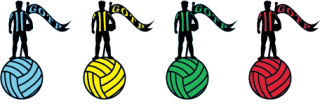ONLY in Major League Soccer (MLS) could a football match begin with an indigenous land acknowledgement, reports Olaf Jensen.
In liberal, multicultural Toronto, the city’s government offers official guidance on the practice, which has emerged in recent years as a way to recognise the original inhabitants of North America.
In Toronto’s case, they are the Mississaugas of the Credit, the Anishnabeg, the Chippewa, the Haudenosaunee, and the Wendat.
It is on their territory that Toronto FC’s BMO Field sits, and the club, one of three Canadian sides in MLS, has dutifully added the land acknowledgement to their pre-match rituals – alongside the now-ubiquitous pyrotechnics display, the release of red smoke, Vatican-style, to announce the arrival of the team, and half-a-dozen sponsored competitions distributing diversity-themed special-edition kits to matchday fans.
It may seem like the triumph of statement and spectacle over sport to most European supporters, but it’s all part of an effort to build a genuine club identity along Torontonian lines.
Spectacle is already an important part of North American sports, but these appeals to diversity, openness, and multiculturalism are the very fabric of Toronto’s identity.
Indeed, with over 160 languages spoken around the city, It’s even part of its pitch as one of the host cities of the 2026 World Cup.
It shouldn’t simply be dismissed as “wokeness”: Toronto supporters seem to buy into it. Unlike in London, where matchday crowds remain overwhelmingly white British, the city’s multiculturalism is well represented among the 27,000 BMO Field faithful.
And these are no mere tourists, but active participants in the entertainment, cheering the pre-match competitors, singing along proudly with the Canadian national anthem (and the dreadful club song), and shouting, jeering, and celebrating at all the appropriate moments throughout the match.
It’s a convivial, family-friendly atmosphere, but it doesn’t lack for passion.
There’s even a group of club ultras filling the misnamed Lakeshore Terrace, complete with flags, banners, and the musical talents of man-with-drum.

In fact, Toronto’s supporters have won a reputation as some of the best in the league. MLS Commissioner Don Garber once credited them with having “created the supporter culture in Major League Soccer,” and as the driving force behind “MLS 2.0”.
They have even organically developed a fierce rivalry with Canadian neighbours CF Montréal, against whom they contest the 401 Derby and the Canadian Championship.
However, it’s all too easy for Europeans to dismiss a football culture, however, passionate, in which clean sheets are shutouts, away matches are road games, and the man of the match is the MVP. One woman, who was about to visit London to see Arsenal play for the first time refused to believe me when I told her she should shout “up the Arsenal” rather than “go Gunners!”
But despite healthy crowds, averaging 25,000 in 2023, Canadians are only soccer-curious.
Many people I spoke to, upon learning I was British, were keen to tell me which European super club they support, but rarely had anything other than a passing interest in Toronto FC.
For Canadian football supporters, the lure of Europe’s super leagues is simply too strong, and in a sporting culture dominated by glamorous, big-money franchises, local loyalty isn’t enough to draw the crowds, status and money MLS needs to compete.
MLS franchises are nevertheless desperate to win the kind of status typically reserved for their counterparts in the NFL, MLB and NBA.
The league has gained a reputation as a retirement home for European and South American superstars. Franchises are keen to capitalise on the cachet of ageing stars like Lionel Messi, now plying his trade at David Beckham’s Inter Miami project.
Toronto, however seems to have taken a different approach. Despite boasting the highest wage bill in the league, the club have relied on far fewer big-name European imports over the years, with perhaps the most notable being Jermain Defoe, Michael Bradley, and Sebastian GIovinco – hardly superstars.
Today, Italian Euro 2020 winners Lorenzo Insigne and Federico Bernadeschi are the most high-profile players on the roster. During my visit to BMO Field, Insigne received the second loudest cheer of the night, behind only the Canada goose that flew across the pitch during the second half.
This more measured approach has been championed by the club’s ownership group, Maple Leaf Sports and Entertainment, which also owns the city’s MLB, NBA and Canadian Football League franchises.
From a business perspective, MLSE’s approach works. In 2023 Toronto FC were estimated to be worth USD 690 million, making them the sixth-most valuable club in the league after US glamour franchises Los Angeles, LA Galaxy, New York City FC, Atlanta United, and D.C. United.
Their off-the-field success led Don Garber to describe Toronto as a “model franchise”.
On the pitch, however, Toronto’s triumphs have been more modest. They dominate the Canadian Championship, but have so far won only one MLS Cup and one Supporters’ Shield, both in 2017. They also reached the final of the 2018 CONCACAF Champions League, which they lost to Guadalajara of Mexico.
Since then, success has largely eluded Toronto. After three seasons languishing near the bottom of the Eastern Conference, the club have embarked on something of a rebuilding project, recruiting former national team manager John Herdman and acquiring new signings from the Premier League and EFL Championship.
Toronto are not a club without ambition. Their smart, compact stadium is receiving a significant upgrade in time for the 2026 World Cup, and they will hope their new management, new players, and smart operating model can help them compete with US clubs that can still attract talented – albeit ageing – European superstars.
Toronto’s exemplary fans are a credit to this friendly, welcoming, and generous country, but attendances have barely grown since the club’s inaugural season in 2007. As a sport, professional football is a latecomer to North America, and in a country dominated by ice hockey, it can only ever play a supporting role.

